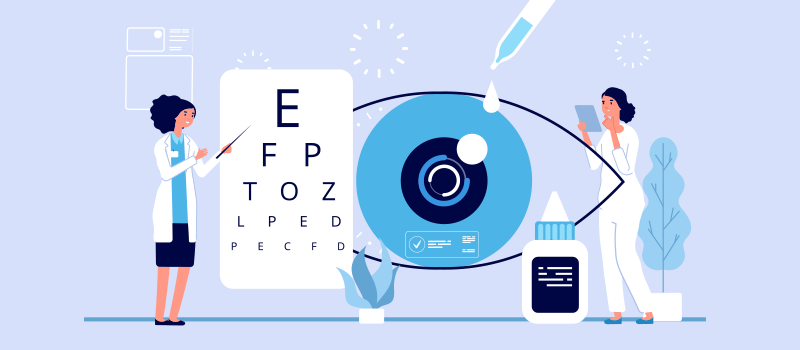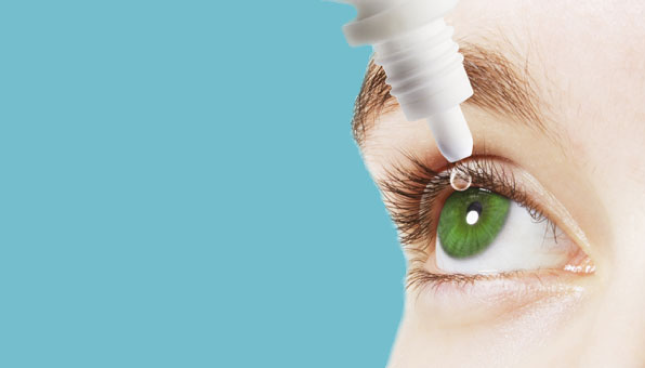Discover a Neurologist in Andalusia: Specialized Clinics and Care Providers
Discover a Neurologist in Andalusia: Specialized Clinics and Care Providers
Blog Article
The Complete Breakdown of Retina Disorders and How They Impact Your Vision
Retina disorders can interrupt this delicate procedure, leading to an array of vision impairments. By checking out the composition of the retina, typical conditions that can affect it, their reasons, signs, and offered treatment choices, we can gain beneficial understandings right into maintaining and shielding our vision.
Overview of Retina Anatomy
The intricate framework of the retina works as the foundation for visual perception and plays an important function in the process of transforming light right into neural signals for the mind to translate. Located at the rear of the eye, the retina includes numerous layers that function with each other flawlessly to promote vision. At the core of this intricate framework are photoreceptor cells called cones and rods. Rods are responsible for vision in low light problems and spotting activity, while cones are vital for shade vision and comprehensive visual skill. These photoreceptor cells transform light energy into electrical signals that are after that refined by other retinal cells, such as bipolar cells and ganglion cells. The bipolar cells beam from the photoreceptors to the ganglion cells, which subsequently send out these signals with the optic nerve to the mind for aesthetic processing. Comprehending the elaborate anatomy of the retina is essential in understanding how vision features and just how various retina disorders can affect aesthetic assumption.

Typical Retina Disorders
Retina conditions include a series of problems that influence the detailed structure of the eye accountable for aesthetic handling. One usual disorder is age-related macular deterioration (AMD), a leading source of vision loss in individuals over 50. AMD influences the macula, a part of the retina critical for sharp main vision, leading to blurriness or unseen areas in the central visual field.
Another prevalent condition is diabetic retinopathy, happening in individuals with diabetic issues. High blood sugar level degrees damage the blood vessels in the retina, causing vision problems or blindness if left neglected. Retinal detachment is a significant disorder where the retina pulls away from its typical setting, creating a sudden beginning of drifters, flashes of light, or loss of vision in a curtain-like pattern.
Finally, retinitis pigmentosa is a group of genetic disorders that trigger the breakdown and loss of cells in the retina, resulting in night loss of sight and a progressive constricting of the aesthetic area - eye doctors in andalusia. Recognizing these typical retina disorders is vital in protecting vision and looking for timely medical treatment
Reasons of Retina Disorders
Various variables add to the development of retina problems, including hereditary tendencies, lifestyle options, and underlying wellness problems. Genetic predispositions play a substantial function in numerous retina problems, such as retinitis pigmentosa and macular deterioration. Individuals with a family members background of these conditions go to a higher threat of creating them why not try this out because of inherited hereditary mutations influencing the retina's function.
Way of living options can also influence retina health and wellness. Smoking, as an example, has been connected to an enhanced threat of age-related macular degeneration, an usual retina condition that can lead to vision loss. Poor nutritional behaviors lacking necessary nutrients like vitamins A, C, and E, as well as omega-3 fatty acids, can additionally contribute to the advancement of retina problems.
Underlying health problems, such as diabetic issues and high check out here blood pressure, are understood to influence the retina. Diabetic retinopathy, an issue of diabetes mellitus, can cause damage to the blood vessels in the retina, causing vision problems. High blood pressure can result in hypertensive retinopathy, where high blood stress affects the blood vessels in the retina, possibly triggering vision troubles. neurologist Andalusia. Understanding these causes is critical in taking care of and avoiding retina conditions.
Signs And Symptoms and Diagnosis
Provided the considerable impact that triggers such as genetic tendencies, way of life options, and underlying health and wellness problems can carry the growth of retina problems, it is essential to acknowledge the signs and symptoms and utilize efficient analysis approaches for early detection and administration. Signs and symptoms of retina conditions can vary depending on the certain problem however might include blurred or distorted vision, the unexpected look of drifters or flashes of light, a dark area in the center of your vision, or a steady loss of central vision. It is important to look for instant medical attention. if you experience any of these signs.
Early detection via routine eye examinations is key to protecting against vision loss and handling retina conditions effectively. If identified with a retina problem, your medical care company will function with you to develop a tailored therapy plan to protect your vision.

Therapy Choices and Monitoring
Therapy options for retina problems differ depending on the underlying cause and extent of the condition. In instances of retinal detachment, medical treatments such as vitrectomy or scleral fastening may be necessary to reattach his response the retina and avoid vision loss.
In diabetic retinopathy, managing blood glucose levels is vital to stop further damages to the capillary in the retina. In addition, therapies like laser surgical treatment or shots may be suggested to reduce swelling and avoid vision loss. Regular eye exams and early detection of retina disorders are essential for successful management and therapy outcomes. Individuals with retina problems need to function very closely with their eye doctor to establish an individualized treatment plan that resolves their details needs and assists keep optimum visual function.
Verdict
In conclusion, understanding the anatomy of the retina, usual problems, causes, signs and symptoms, medical diagnosis, and therapy options is important in handling vision disabilities. Retina conditions can substantially influence vision and lifestyle, making very early discovery and appropriate administration vital. By staying informed about these conditions and looking for suitable medical care, individuals can much better preserve their vision and preserve total eye wellness.

Understanding the intricate anatomy of the retina is fundamental in understanding exactly how vision features and exactly how numerous retina conditions can impact aesthetic perception.
Retinal detachment is a severe disorder where the retina draws away from its normal setting, creating an unexpected start of advances, flashes of light, or loss of vision in a curtain-like pattern.
Signs and symptoms of retina disorders can differ depending on the details problem yet might include blurred or distorted vision, the abrupt look of advances or flashes of light, a dark area in the center of your vision, or a gradual loss of main vision.In final thought, recognizing the anatomy of the retina, typical problems, causes, signs, medical diagnosis, and therapy choices is important in handling vision impairments.
Report this page